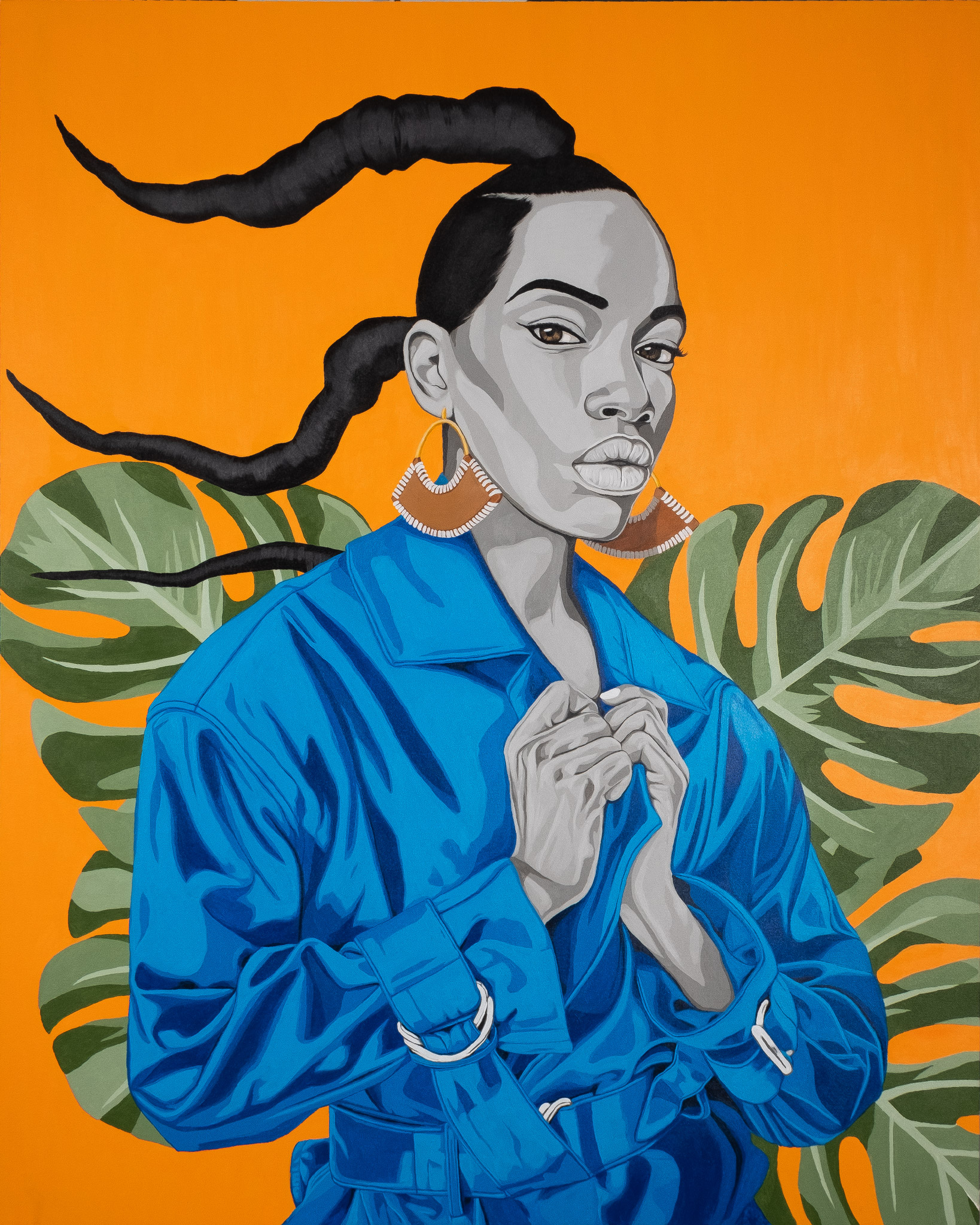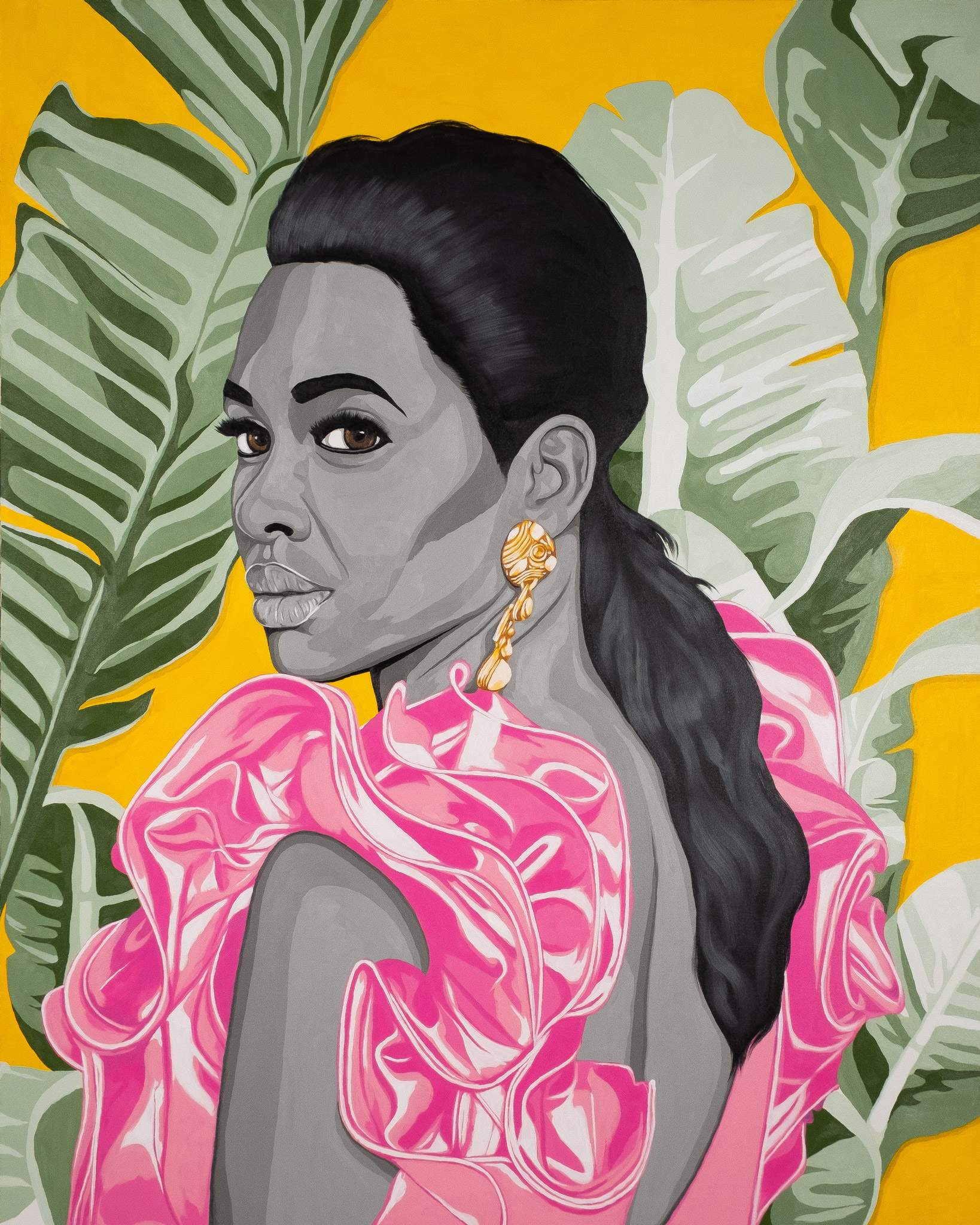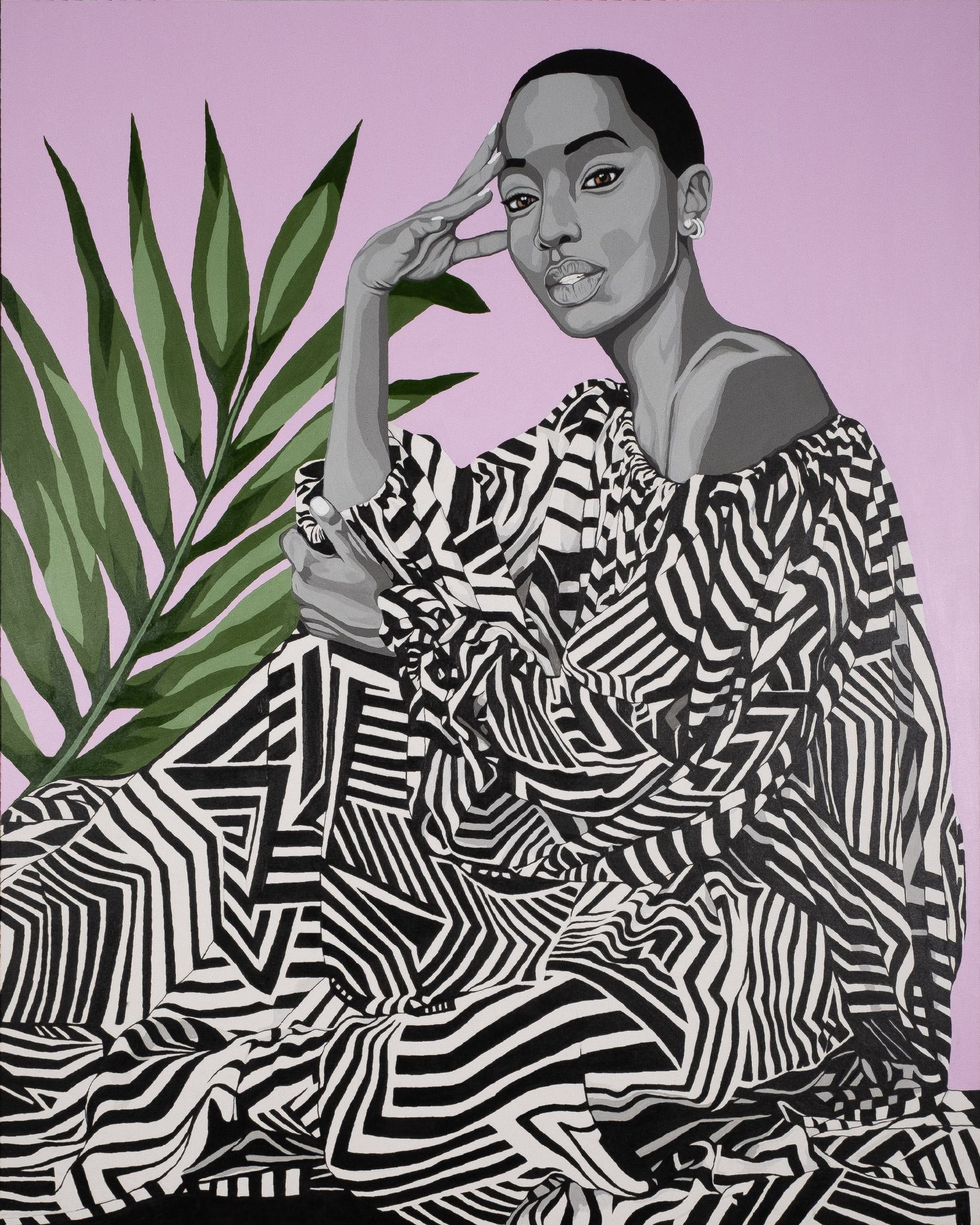Toronto Artist Benny Bing’s BLOOM Exhibition Reclaims Narratives of African Beauty

“N I S A A.” 48×60 in. Acrylic on canvas.
Benny Bing’s paintings are unapologetic statements of colour and composition; the self-taught painter creates work that celebrates the beauty of black bodies in a system of unequal representation. His latest exhibition, BLOOM, comprises bold portraiture of black women, a theme that is translated across his oeuvre. Originally intended as a live installation, BLOOM has been revamped into an online exhibition, on view as of June 12, with a 3D virtual gallery that viewers can navigate through.
The exhibition is the fourth in a series of installations centred around the underrepresented beauty of modern black and African women. The first in the series, ADELANI, alluded to Bing’s African heritage by paying tribute to headwraps, while Women of Colour celebrated the textures of natural hair. The third series, Colour Blind, tackled the issue of “colour blindness” in society by emphasizing the need to embrace skin colour, not ignore it. BLOOM “is an evolution for me creatively and also a continuation of the dialogue on blackness and beauty in my work,” says Bing. The series takes Bing’s trademark colour pallete used on the subject’s skin in his usual work and transfers it onto the background. Subjects are painted in a monochromatic grey, while the background bursts alive with fauna and fabrics. The women bloom like flowers in the foreground against the backdrop of plants, says the artist.
For the subjects, Bing chose women from Toronto, Kenya, and Nigeria, and recorded audio clips of them speaking on the subject of blackness and beauty, which can be heard alongside the works in the online exhibition. With his work, Bing hopes to shift the narrative of beauty. “I’m just helping tell the story,” he says. “But the story is really about these women and always has been about these women.”

“A D A N N A.”48×60 in. Acrylic on canvas.
To Bing, who is of Nigerian and Bajan descent, reclaiming the narrative on black bodies is vital to his work and the work of other black artists—particularly when those narratives become subject to fetishization when controlled by others. “As black creators, we have to correct people that try to change the narrative of what we want the work to be,” he says. “We have a very important duty to tell our story and be mindful of the type of story we’re telling, because of who is going to be ingesting this story, whether it be little black girls or an older white male.”
It is these stories, told through all mediums, that carry the power of social change. “We define the human experience by the cultures that we participate in, and art is a huge part of culture,” Bing explains. “Being able to use your art to convey a message is very important. For example, look back at last week when the mayor of DC had them paint ‘Black Lives Matter’ on the streets that led up to the White House. That is art.”
As the ripple effects of the BLM movement continue to spread globally, Bing has been pushing boundaries in his own ways. The top galleries represent very few black artists in Toronto, he explains, but with social media, Bing has built a solid following—including Dave Chappelle and the Weeknd—using tools from his previous job in digital marketing. As a self-made artist, Bing combines creativity with a business mindset, rejecting the traditional gallery system as the sole means to success. He sums up his artistic philosophy in one sentence: Don’t wait, do.
“I’m a firm believer that if you’re not invited to the table to make money, tell your story, and be part of the conversation, then you should create your own table,” he says. “But you don’t have to create the same table that they have, you can make whatever table you want. I’m not going to wait for someone to show up and say, ‘You’re really amazing, let’s represent you.’ I’m looking to disrupt [the] industry. We don’t need representation any more. I’m not going to wait, I’m going to keep on pushing.”

“S H E R O N N A.” 48×60 in. Acrylic on canvas.
The conversation on racial inequality is only beginning, and the art world is one space where it needs to be addressed. Bing, whose real name is Olugbenga Alaga, originally opted for the nickname “Benny” when he realised that using the “Americanized/Canadianized” version of his name led to more callbacks when sending in resumés. When he transitioned into his art career, Bing kept his chosen nickname but continues to speak out about the discrimination.
“I’m really happy that this current climate has brought up the topic of race relations and inequality and injustice,” he says. “I think this is a perfect time for people to continue that dialogue in a meaningful way.”

“K E N Y A.” 48×60 in. Acrylic on canvas.
If you liked the work of Benny Bing, check out some of our other stories about black artists making waves.
________
Never miss a story. Sign up for NUVO’s weekly newsletter here.




